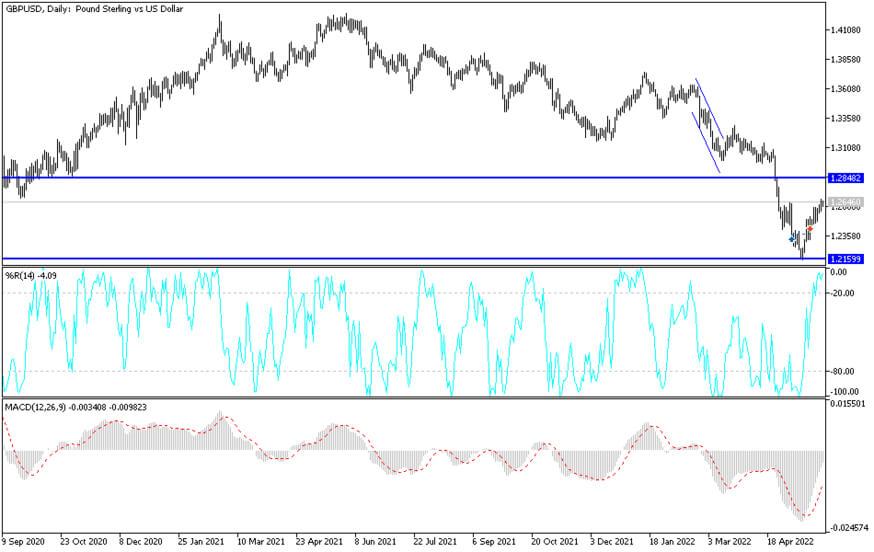[ad_1]
Sterling is likely to benefit against the Euro and Dollar if Chancellor Rishi Sunak’s £15 billion cash donation boosts British consumer confidence over the coming weeks. Sunak announced that the additional spending will be provided to families struggling with the rising cost of living and accordingly economists say the measures will thus boost economic growth. The chance of the GBP/USD pair was good for that, as it moved higher towards the resistance level 1.2666, which is the closest to it, at the beginning of this important week’s trading.
For its part, the economic consultancy, Capital Economics, estimates that GDP growth in the UK will be stronger by 0.2-0.3 percentage points. Meanwhile, analysts at Investec and Pantheon Macroeconomics say monetary strengthening significantly reduces the risks of the British economy falling into recession.
UK inflation is expected to rise further as 8.4 million households will see £650 put into their bank accounts, complicating the economic outlook given that the cost of living crisis is in fact an inflationary crisis. Sunak admitted to the British Parliament that the measures will inevitably boost inflation rates, although he believes the additional impulse is “manageable”. Meanwhile, additional inflationary pressures will put more pressure on the Bank of England to raise interest rates.
Capital Economics estimates, other things being equal, this loosening of fiscal policy means that in order to bring inflation down to the monetary policy target of 2%, it must be tighter. This supports their view that the BoE will have to raise rates from 1.00% now to 3.00% next year.
Prior to that, the pound had fallen sharply during the month of May as analysts blamed the declines on rising inflation, declining economic growth, plunging consumer confidence and the Bank of England’s apparent unwillingness to raise interest rates significantly. Thus, the currency could certainly benefit if UK data surprisingly begins to trend upwards again in the coming months, bolstering expectations of a rate hike from the Bank of England.
Dominic Banning, Head of FX Research at HSBC, says: “The UK consumer response will be particularly important going forward. The long-running GfK Consumer Sentiment Index dropped by two points to -40 in May, the lowest score since records began in 1974. This is significant for the British economy as it is driven by the consumer-facing service sector. So what is good for consumer confidence is good for the economy, and therefore sterling.”
Economic surveys covering any shifts in sentiment and consumer behavior after the UK Treasury announcements are still at least a month away, meaning the tide of deteriorating sentiment towards the UK and the British pound has yet to turn. Accordingly, the analyst adds, “The pound is being pushed and pulled by recent government policy statements related to the energy sector, with potentially positive cyclical signals struggling against contradictory negative structural signals.” Some of the negatives include the anti-business nature of the windfall tax on energy producers and the further deterioration of the UK’s debt situation. Until it becomes clear how this new fiscal policy interacts with monetary policy, the British Pound may struggle to set direction.
According to the technical analysis of the pair: On the daily chart below, the price of the GBP/USD currency pair started forming an ascending channel opposite to the broader bearish channel. As I mentioned before, the breach of the 1.3000 psychological resistance will be important for the bulls to continue controlling the trend. The current trend will continue to face a threat if the currency pair returns to the vicinity of the support levels 1.2490 and 1.2350, respectively.
I still prefer to sell the currency pair from every bullish level, as the factors of the US dollar’s strength are continuing and may remain for a long time.

[ad_2]